
Between Paracas and Naxca, Perú. Perhaps because the image shows the exact opposite of what they want you to do, the message doubles down: “Don’t urinate or piss outside the bowl.” Further adding to its charm, it’s posted above urinals, not toilets.
An inquisitive old fart with a camera

Between Paracas and Naxca, Perú. Perhaps because the image shows the exact opposite of what they want you to do, the message doubles down: “Don’t urinate or piss outside the bowl.” Further adding to its charm, it’s posted above urinals, not toilets.
Observation 1: insane verticality

We didn’t climb Huayna Picchu in the background, restricted to not-too-many people per day. We didn’t have time. Yes, I’d want to on another trip. Then there’s Putucusi, opposite Machu Pic’chu. Reports vary on its current accessibility, but back in the day, our guide Wilco told me, it took days to climb, hacking with machetes all the way on ancient Inca steps/trail to arrive at a small slab temple at the top.

Observation 2: Inca: new kids on the block
“Temple of the Sun,’ with a couple tiers of Inca stonework added at the top. Notice the difference in workmanship?


Original stonework, right. Inca stonework, left.
Observation 3: the smoking gun

Something happened here! On one of Brien Foerster’s earlier trips, he told me, a geologist had supposed that a magnitude-9 or so earthquake had liquified the soil under the part on the right, causing it to sink and pull the megalithic wall apart.

Given such a powerful shake, how is it that these Inca buildings remained standing?
Answer: they didn’t, obviously. The hadn’t been built yet.
Observation 4: lotsa people. OK.

I expected that thousands of people swarming the site would sully the experience. Not even close. I hardly noticed them, except in constricted areas. When I told our local guide about Syd’s free-wandering experience there in the 1980s, he lit up with recollections of how he started guiding when he was 16, in the 1980s. In those days, he said, sometimes they’d play an impromptu game of soccer ball in the main courtyard.
These days, that would cause lots of whistle-blowing, but it wouldn’t be from referees.

Taxi, airport: La Paz, Bolivia.
Hopefully I will have freetime and decent internet next short while to catch up on other notable observations.
300 vertical meters above Cusco, Perú, a stone wall. A big stone wall. One of many.
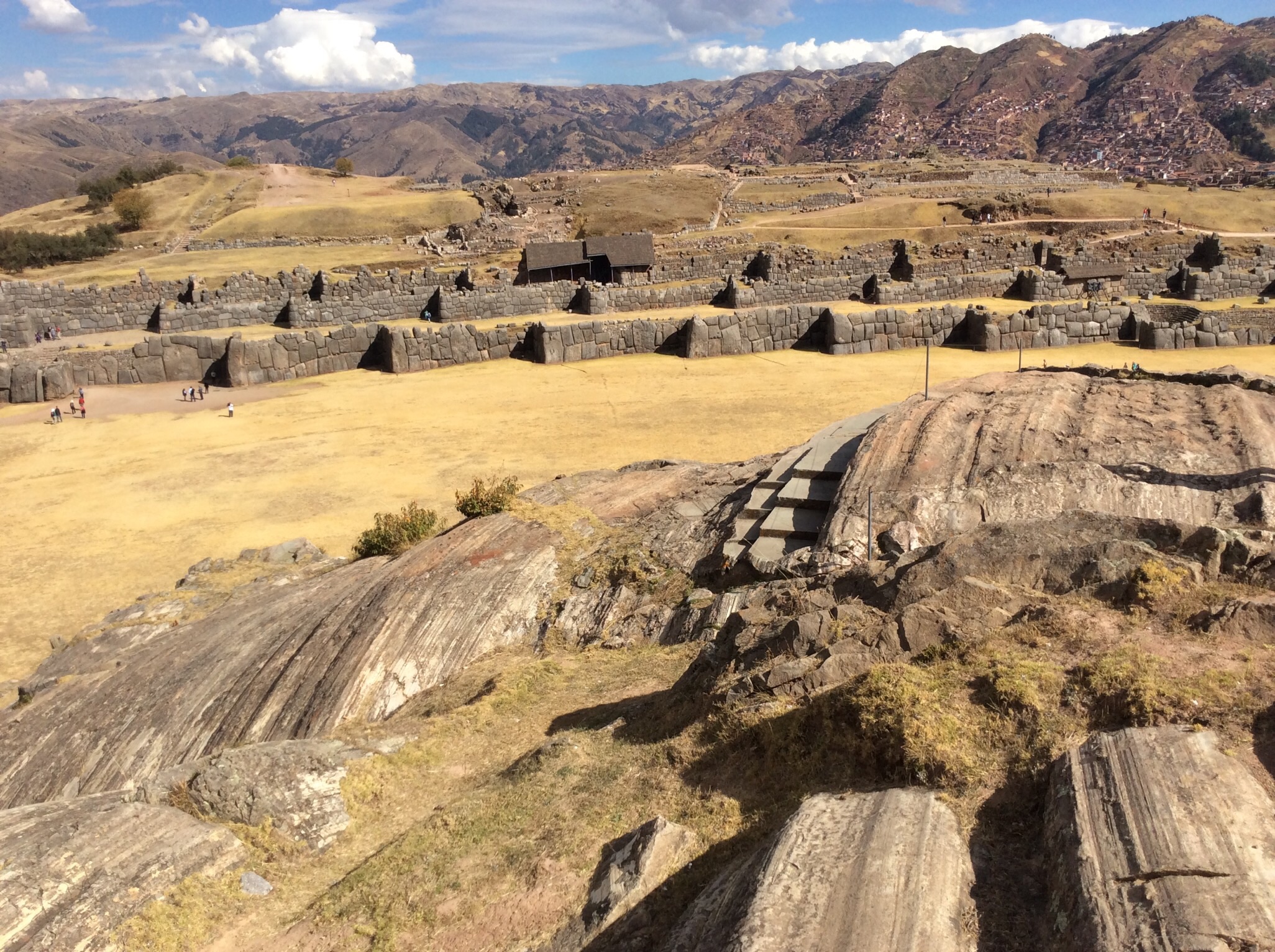
How big? Those are full grown human beings.
Who built it? No idea.
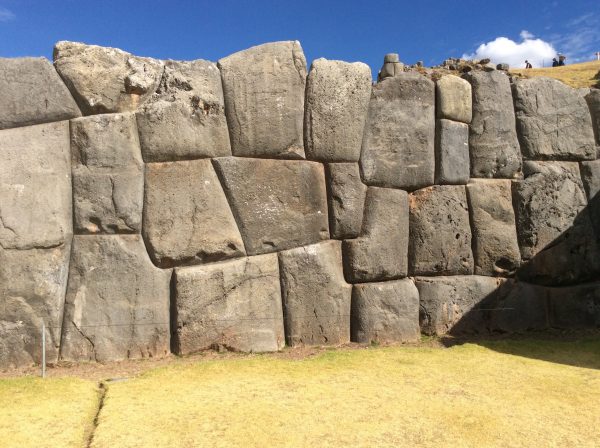
How did they build it? No idea.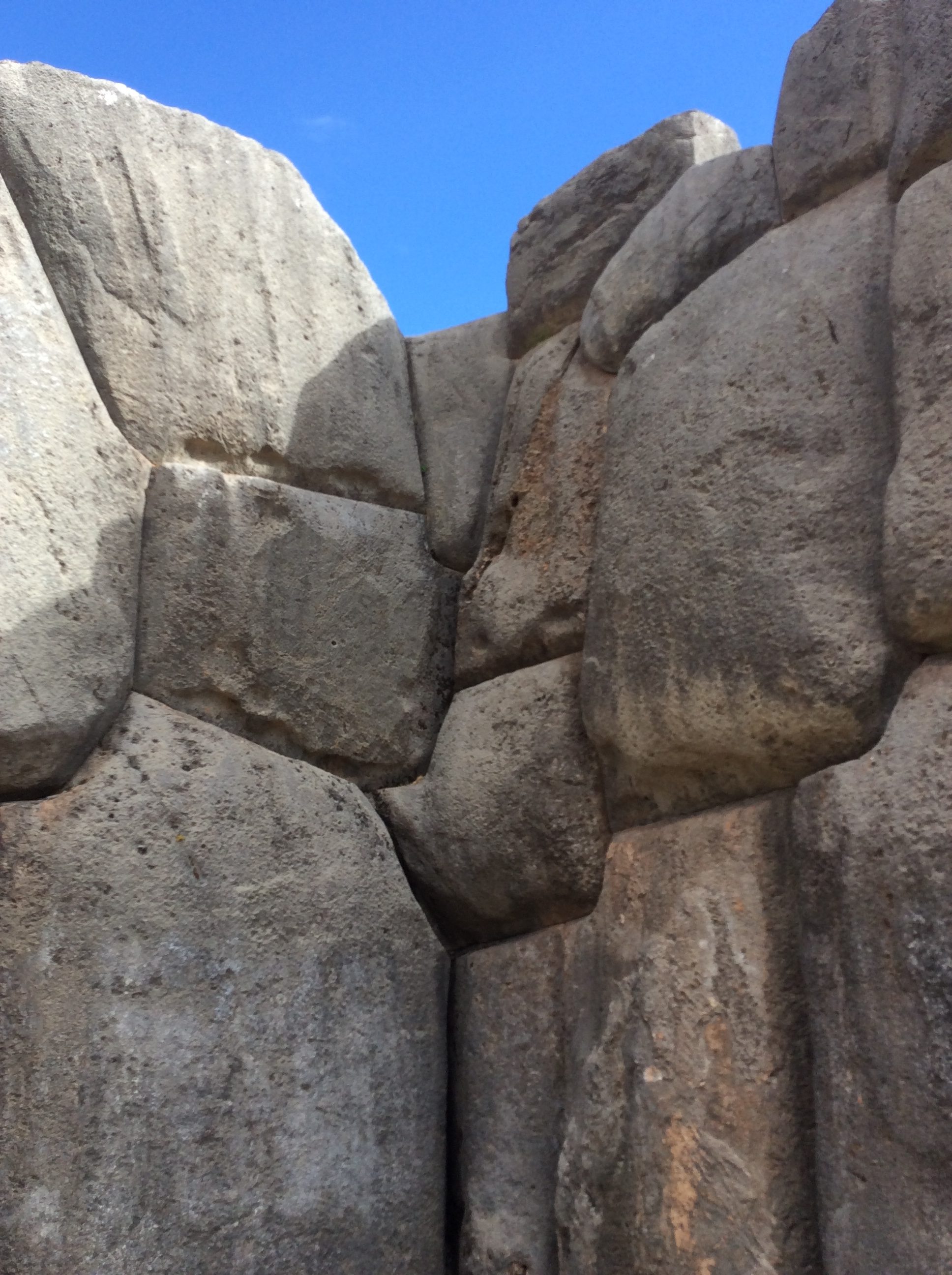
When did they build it? Apparently before the cataclysm. Here is the top of a nearby structure, hundred-ton monolith, that ended upside down. Takes a pretty big earthquake to do that! This caraclysmic event perhaps occurred around 12,000 years ago.
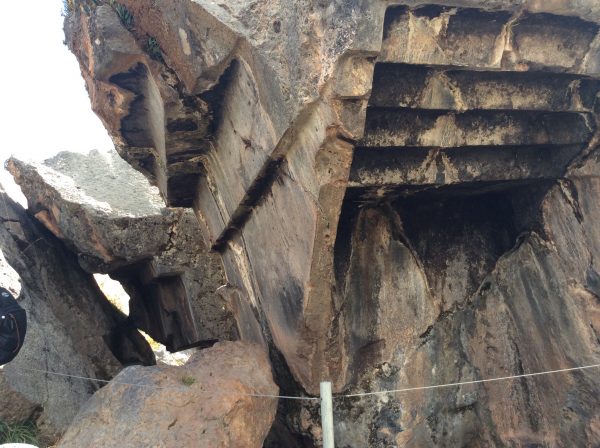
One more thing: in the year 2016, our “advanced” society is completely incapable of doing this type of stonework, or anything like it.

— wish you were here!
Travel today, from incredible seafood in Lima to high in the mountains in Cusco, and, among other delicacies, guinea pig. Stay tuned 😉
Much as it surprises me, Wikipedia has it pretty much right concerning the Ika stones. But who needs facts when you have belief? Just for fun, scan this article for its amusing faith-based struggle with coherent thought.
 Now, meet Irma Gutierrez de Aparcana, age 78, here demonstrating how she has been making the Ika stones for the last 61 years.
Now, meet Irma Gutierrez de Aparcana, age 78, here demonstrating how she has been making the Ika stones for the last 61 years.

Here’s the stone she just spent a few minutes on, apparently a dinosaur, scratching with a piece of hacksaw blade.

Here’s what the finished product might look like. Stones might portray humans riding dinosaurs, or complicated medical procedures (inspired by medical journals provided by Dr. Javier Cabrera, who originally promoted these “ancient wonders.” Or they might have telescopes or microscopes, “proving” that they were in use millions of years ago. Oh, yeah, the dark parts are done with shoe polish.
Not convinced? Ya gotta believe!
Irma estimates that she used to do up to twenty stones per day. 61 years. You do the math.
Disclosure: historical anomalies do exist, and I find them fascinating. Ancient superior (and lost) technology existed, as I’ll demonstrate in the next few days. But the Ika stones ain’t part of that!









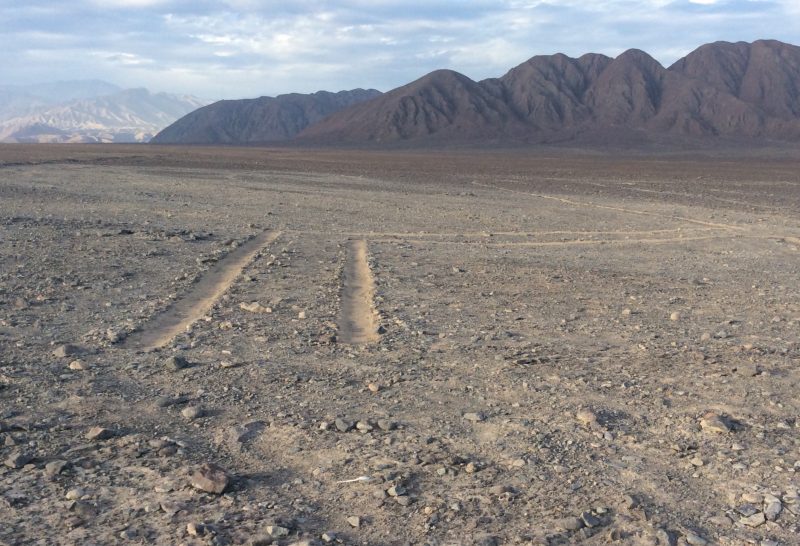


Sunset at Nasca, Peru
Museum with elongated skulls. Want a better look? Sure! Your tour guide puts on rubber gloves, opens the case, and takes them out to the front porch where the light is better. The closest is a normal human skull ( maybe 500 years old) for comparison:

An MD on the tour discusses anomalies in the sutures of the elongated skulls:

Tour guide Brien Foerster shows a skull he found and donated to the little museum in Paracas, Peru:
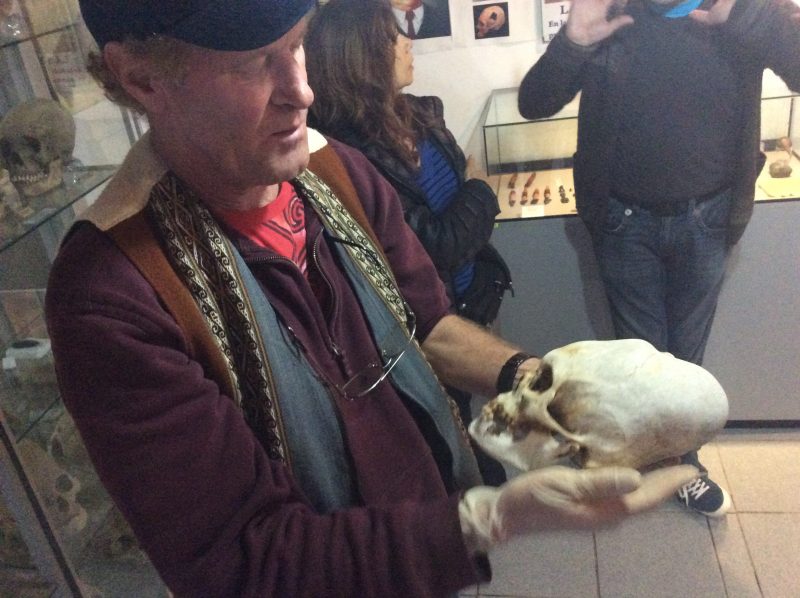

No, I do not intend to go all Instagramy, but for the benefit of my seafood-deprived friends in Uruguay. On the left, shrimp, octopus, potato thingies, squid, tuna, razor clams, and scallops. Chimichurri and a delightful picante sauce. On the right, Cesar salad with corn-battered prawns. All exquisitely prepared. A bit under USD 30.